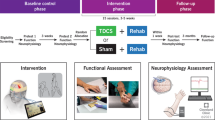Abstract
Study design:
Three-dimensional kinematic analysis of car transfer (CT) movement in four adult males with C6 tetraplegia.
Objectives:
The aim of the present study was to assess the normal transfer technique movement from a wheelchair to a car (that is, CT) in subjects with tetraplegia. A better understanding of CT movement is invaluable knowledge for spinal cord injury rehabilitation. This type of knowledge will improve rehabilitation programs so that patients with tetraplegia will have greater societal participation.
Setting:
School of Comprehensive Rehabilitation, Osaka Prefecture University, Osaka, Japan.
Methods:
Four adult males with C6 tetraplegia, an impairment grade of A according to the American Spinal Injury Association guidelines, took part in the study. The subjects used their own wheelchair and car in our assessments of their CT movement technique. Movements were assessed using a three-dimensional video analysis system with six digital video cameras. CT data, which included lateral displacement of the head and buttocks, and angular displacement of neck flexion and trunk forward inclination, were collected and correlation coefficients were calculated.
Results:
All four subjects demonstrated negative correlations in lateral displacements greater than 0.70. As for correlation coefficients of angular displacement, two subjects demonstrated negative correlations (r=−0.98 and r=−0.77) and one subject demonstrated a positive correlation (r=0.75). The neck flexion and trunk forward inclination strategy was different among the four subjects.
Conclusions:
Each subject with C6 tetraplegia demonstrated different strategies during CT movement.
Similar content being viewed by others
Log in or create a free account to read this content
Gain free access to this article, as well as selected content from this journal and more on nature.com
or
References
Carpenter C, Forwell SJ, Jongbloed LE, Backman CL . Community participation after spinal cord injury. Arch Phys Med Rehabil 2007; 88: 427–433.
Ku JH, Jang DP, Lee BS, Lee JH, Kim IY, Kim SI . Development and validation of virtual driving simulator for the spinal injury patient. Cyberpsycol Behav 2002; 5: 151–156.
Kiyono Y, Hashizume C, Matsui N, Ohtsuka K, Takaoka K . Car-driving abilities of people with tetraplegia. Arch Phys Med Rehabil 2001; 82: 1389–1392.
Allison GT, Singer KP, Marshall RN . Transfer movement strategies of individuals with spinal cord injuries. Disabil Rehabil 1996; 18: 35–41.
Allison GT, Singer KP, Marshall RN . Muscle activation patterns during transfer in individuals with spinal cord injury. Aust J Physiother 1995; 41: 169–176.
Gagnon D, Nadeau S, Gravel D, Noreau L, Lariviere C, Gagnon D . Biomechanical analysis of a posterior transfer maneuver on a level surface in individuals with high and low-level spinal cord injuries. Clin Biomech 2003; 18: 319–331.
Gagnon D, Nadeau S, Gravel D, Noreau L, Lariviere C, McFadyen B . Movement patterns and muscular demands during posterior transfers toward an elevated surface in individuals with spinal cord injury. Spinal Cord 2005; 43: 74–84.
Gagnon D, Nadeau S, Noreau L, Eng JJ, Gravel D . Trunk and upper extremity kinematics during sitting pivot transfers performed by individuals with spinal cord injury. Clin Biomech 2008; 23: 279–290.
Tanimoto Y, Nanba K, Tokuhiro A, Ukida H, Yamamoto H . Measurement system of transfer motion for patients with spinal cord injuries. IEEE Trans Instrum Meas 2008; 57: 213–219.
Gagnon D, Nadeau S, Noreau L, Dehail P, Gravel D . Quantification of reaction forces during sitting pivot transfers performed by individuals with spinal cord injury. J Rehabil Med 2008; 40: 468–476.
Dittuno JF, Young W, Donovan WH, Creasey G . The international standards booklet for neurological and functional classification of spinal cord injury. Paraplegia 1994; 32: 70–80.
Maynard FM, Bracken MB, Creasey G, Ditunno JF, Donovan WH, Ducker TB et al. International Standards for Neurological and Functional Classification of Spinal Cord Injury. Spinal Cord 1997; 35: 266–274.
Fujiwara T, Hara Y, Akaboshi K, Chino N . Relationship between shoulder muscle strength and functional independence measure (FIM) score among C6 tetraplegics. Spinal Cord 1999; 37: 58–61.
Gagnon D, Koontz AM, Murloy SJ, Nawoczenski DA, Forslund EB, Granstrom A et al. Biomechanics of sitting pivot transfers among individuals with a spinal cord injury: a review of the current knowledge. Top Spinal Cord Inj Rehabil 2009; 15: 33–58.
Jakob W, Wirz M, van Hedel HJA, Dietz V . Difficulty of elderly SCI subjects to translate motor recovery—‘Body Function’—into daily living activities. J Neurotrauma 2009; 26: 2037–2044.
Nyland J, Quigley P, Huang C, Lloyd J, Harrow J, Nelson A . Preserving transfer independence among individuals with spinal cord injury. Spinal Cord 2000; 38: 649–657.
Yarkony GM, Roth EJ, Heinemann AW, Lovell LL . Spinal cord injury rehabilitation outcome: the impact of age. J Clin Epidemiol 1988; 41: 173–177.
Author information
Authors and Affiliations
Corresponding author
Ethics declarations
Competing interests
The authors declare no conflict of interest.
Rights and permissions
About this article
Cite this article
Kataoka, M., Yasuda, T., Kataoka, T. et al. Movement strategies during car transfers in individuals with tetraplegia: a preliminary study. Spinal Cord 50, 440–445 (2012). https://doi.org/10.1038/sc.2011.170
Received:
Revised:
Accepted:
Published:
Issue date:
DOI: https://doi.org/10.1038/sc.2011.170



